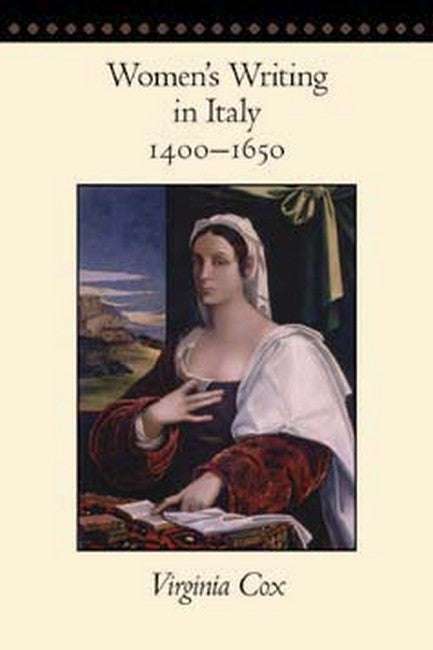AcknowledgmentsIntroductionChapter One: Origins (14001500)1. The ""Learned Lady"" in Quattrocento Italy: An Emerging Cultural Type2. The ""Learned Lady"" in Theory: Models of Gender Conduct and Their Contexts3. The ""Learned Lady"" as Signifier in Humanistic Culture4. Renaissance Particularism and the ""Learned Lady""Chapter Two: Translation (14901550)1. Women, the Courts, and the Vernacular in the Early Sixteenth Century2. Sappho Surfaces: The First Female Vernacular Poets3. Bembo, Petrarchism, and the Reform of Italian Literature4. ""So Dear to Apollo"": Veronica Gambara and Vittoria Colonna after 15305. Founding Mothers, First Ladies: Gambara and Colonna as Models and IconsChapter 3: Diffusion (1540 1560)1. Manuscript and Print in the ""Age of the Council of Trent""2. Virt+¦ Rewarded: The Contexts of Women's Writing3. Women Writers and Their Uses: Case Studies4. Literary Trajectories: Continuity and Change5. Women Writers and the Paradox of the PedestalChapter Four: Intermezzo (1560-1580)Chapter Five: Affirmation (15801620)1. Women's Writing in the Age of the Counter-Reformation2. Chivalry Undimmed: The Contexts of Women's Writing3. A Literature of Their Own? Writing, Ownership, Assertion4. The Twilight of GallantryChapter 6: Backlash (15901650)1. The Rebirth of Misogyny in Seicento Italy2. Misogyny and the Woman Writer: The Redomestication of Female Virt+¦3. Women's Writing in Seicento Italy: Decline and FallCodaAppendix A: Published Writings by Italian Women, Fifteenth to Seventeenth CenturiesAppendix B: Dedications of Published Works by WomenNotesBibliographyIndex

